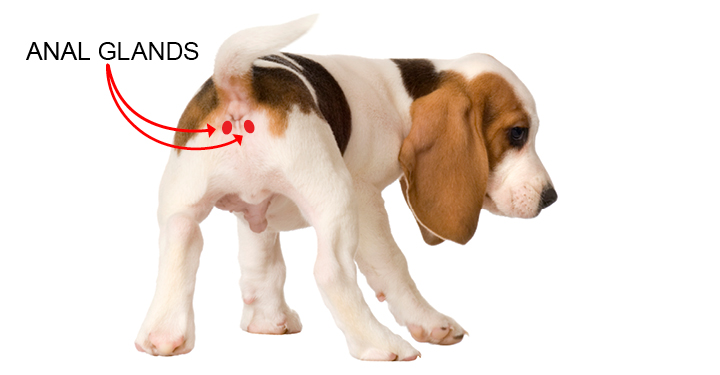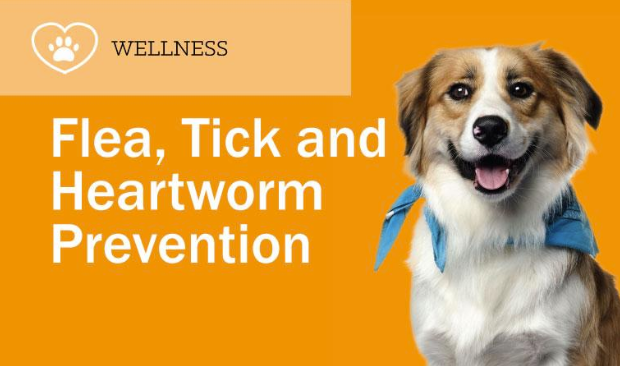Phone: (302)234-3275
Fax: (302)234-3286
Email: contact@lantanavetcenter.com
Hours:
Mon, Wed, Fri: 8:00 AM- 6:00 PM
Tue, Thurs: 8:00 AM- 8:00 PM
Saturday: 8:30 AM-
12:00
PM
Sunday: Closed
Get the personal touch for your pet
Discover the caring approach to pet care at Lantana Veterinary Center. Your animal companions receive high-quality, personalized service delivered by dedicated professionals committed to supporting the bond between pets and their owners. Basic pet care embraces every stage of life: puppies and kittens, adult pets, and loyal senior companions. We offer specialized areas of treatment such as trigger point acupuncture, laser surgeries, soft tissue and orthopedics. Pet owners receive support as well, through pet nutritional counseling, pet boarding and day care services, and end-of-life care. We are proud to be a member of the Association of Avian Veterinarians.



Preventative Care
With over 30 years of experience, our team of 3 full-time doctors and 12 technicians can care for your pet throughout his life, ranging from routine exams and vaccinations, unexpected sick visits, hospitalizations or surgery

Skilled Surgical Care
We have the skill and experience to offer advanced surgeries in soft tissue and orthopedics and we utilize the laser for several procedures

Exotics Care
From small mammals to birds to reptiles, we are here to care for your exotic pet. We offer routine examinations, internal medicine and surgical care for a range of exotics

Friendly Staff
Our warm and friendly staff will care for your pet like one of their own
Get loving nurturing care for your pet
From puppy and kitten care to adult and senior pets, wellness is an attitude of protection from risk and an enhanced healthy lifestyle. Regular visits are the cornerstone of wellness. Whether you have a dog, a bird, or a precious pocket pet, you can trust us with their lifelong care.

Laser Surgery
Surgical advancements using lasers have helped to minimize pain, bleeding, and swelling

Acupuncture
Trigger point acupuncture helps ease pain and suffering caused by trigger point strain.

Boarding and Bathing
We board dogs under 50 pounds, cats, and small critters. If you're going on vacation, we will make sure your fuzzy friend is well cared for!
News and Events
Anal Gland Disease in the Dog

Often we hear people talking about anal gland problems in their dogs and what they have to do to correct the problem. But what are the anal glands, why do dogs have them, and what do you have to do for them? The anal glands are 2 glands that exist at the 10 o’clock and 2 o’clock positions around the anus. They make a very noxious, smelly, foul secretion. People are a little unsure why the dog has anal glands. The skunk uses its anal glands as warning and protection and can shoot the secretions 12 feet from its body. The dog really does not functionally use them. Dogs will often express their glands when they are excited or may express them when they defecate. But they do not need to use the secretion for any reason that we know about. It is like the human’s appendix; while the rabbit and the horse use their appendix or cecum to break down hay and grass so that they can digest and get energy from those sources. Humans have an appendix, but it no longer has any use or purpose. They only time we hear about the appendix is when there is a problem and the only time we hear about dog’s anal glands is when there is a problem.
The biggest problem is that the dog is not a creature made by nature. The wild dog, which we have not seen for 3000 years, may have used the glands for marking, but we really do not know. The dog as it is now has been bred and changed by humans to make all sorts of different breeds. We have stretched or shrunk their bodies, changed the shape of their heads and butts, and created breeds ranging from Teacup Poodles to Great Danes. In changing their body shapes, some of the anal glands now no longer sit exactly where they need to be to function properly. Some people will tell owners to increase bran in the diet to make a bulkier stool, but it is rarely a problem that the stool is not robust and big enough. It is just a problem that the organ, which has no real function, is not sitting exactly how it should sit or working the way it should work.
So, what are the problems that dogs have with their anal glands? Well, there are three big problems. The most common problem is glands that get backed up and do not express are irritating to the dog. The second problem is anal glands can get infected and/or impacted. The third problem is dogs that use their anal glands too well and express them all too well.
The most common anal gland problem is dogs that have a back up in their glands and they feel the pressure and often butt scoot around on the carpet or floor. These glands are not infected, but either the glandular secretion is too thick, or the dog has a problem emptying the glands. Sometimes, atopy or inhalant pollen allergies will make the secretions thicker and allergic dogs will often scoot more. Butt scooting can cause more scooting because there is a chemical in their skin when scratched causes the skin to become itchier. So scooting makes the dog want to scoot more. Most of these dogs, if the glands are expressed internally by a veterinarian, will stop scooting and the dog will become comfortable again. How often is too often? Well, there is a controversy that says if the dog is not having a problem with the glands and you express them too much, it may make them weaker. For the dogs that need them expressed, we say that if you are getting them expressed less than once a month, it is probably okay. If they need to get them expressed more than once a month, they should probably be removed. Most people wait about a week or so once they see that the dog is irritated with its butt, so that if owners are bringing their dogs in every three weeks, there is probably only one week where the dog is actually comfortable. Groomers express dog’s anal glands externally when they groom them. This is because since most dogs tend to express their anal glands when they get excited and they are excited to see their owners after being groomed, they may express their glands at pick up. The last thing the groomer wants is for the good smelling dog to express their noxious anal glands as soon as the owner picks them up. If your dog is scooting from a backed up anal gland, usually a veterinarian needs to internally express the gland to make the dog comfortable. While the backed up anal gland is the most common of the problems, it is mostly irritating and not really a harmful disease for the dog.
The second problem is much more of a harmful disease for the dog. These are infected or infected and impacted glands. The anal glands sit in a very dirty area. They are attached next to the rectum and can get infected with some nasty bacteria. Sometimes anal gland infections will cause gastrointestinal diseases such as straining, diarrhea, or vomiting. If the anal gland infection is caught before they have impacted, it is much easier to treat. They are treated by expressing the glands (the veterinarian must get all the infected material out of the gland) and the use of antibiotics. The antibiotics must be effective against gram positive, gram negative, and anaerobic bacteria because this is a dirty area. Sometimes the anal glands are infused with an antibiotic ointment to get to the inside of the gland as sometimes oral antibiotics cannot get to that tissue. The glands would be infused daily to every three days to get the infection to resolve.
Impacted anal glands are often a surprise. The dogs often never scoot. One day they are licking or sensitive on their read ends and you notice that the dog has two butt holes. The glandular material gets so thick and infected that it cannot get out the actual anal gland duct and will burst out though the skin as the abscess breaks open. Now there is a pathway from the dirty rectum through the skin and out next to the butt hole. Often antibiotics alone are not enough to get these to resolve. Often surgical debridement and drainage are needed with antibiotics to clear up these problems. Once the infection is cleared, it is useful to check and express the anal glands once a month for a few months to make sure they are working normally again. While this would be a good time to remove the glands, it cannot be done at this time. When a veterinarian is removing the glands, they need to make sure that they get the enter gland. If any piece of the gland is left in the tissue, it will cause draining infections. When the anal glands explode they are not intact and a veterinarian cannot be sure to get the whole anal gland, so they must be healed first and then they can be removed if needed.
The third anal gland problem causes the least disease but often the most issues. This problem is when the anal glands function too well. The anal glands often express with stress or excitement, but some dogs will express them with very little stimulation. It is hard to live with a dog that is making a puddle of anal gland secretions on your floor or couch whenever you are with your dog. These dogs almost always must have their glands removed. The glands are technically working properly, so there's really nothing you can give your dog to make the glands not work well. If there was, you would then be stuck with one of the earlier discussed problems.
So, do dogs need their anal glands? No. There is no real function and therefore the anal glands can be removed. The only problem is that the anal glands live next to the anal sphincter and all the nerves running to that area. There are two sets of nerves going to the anal sphincter: the external nerve layer, which needs to be cut to remove the glands and the internal nerve layer, which needs to be preserved to save rectal function. The incisions for this surgery are actually pretty small, only about 2 cm long, but because of the risk of damaging the nerves, it can take an hour or two to perform the surgery. Sometimes post-surgery, there is a small period of time where the anal sphincter tone is decreased (no more than two weeks), and appropriate antibiotics must be used to prevent infection in the already dirty area. An Elizabethan collar must be used after surgery to make sure the dog does not lick at the incisions. This is a surgery that when performed properly and healed, the anal glands are no longer there to back up, impact, or leak again. If you have any questions about issues with your dog scooting, licking its back end, or excess production of anal gland secretions, please give us a call and we will be happy to help you out.

Spring is upon us and the bugs are coming out! Don’t forget to keep all your pets protected from the nasty fleas, ticks, and mosquitos. It is important to keep them on preventatives all year round because all these bugs can still be out there even during winter months.
Each flea, tick, and heartworm product works in a different way and is used to prevent different way and is used to prevent different parasites, so be sure and ask which product would be right for your pets and their living situation. We’ll be glad to help you figure out what works best for you and your pets!
Some products also have great rebates and discounts. Stop by the clinic to ask what is available! We carry Nexgard and Simparica, flea and tick preventative for dogs. For heartworm preventative for dogs, we carry Interceptor Plus and Heartgard Plus. For cats, we carry Revolution and Bravecto
IN CASE YOU DIDN’T KNOW! When you purchase your preventatives through a veterinarian, the manufacturer has a guarantee that includes treatment of diseases caused by those parasites (please check with the manufacturer), consults if there are adverse effects, and many other benefits. If these products are purchased online or at big box stores, the manufacturer cannot guarantee the product is exact same chemical, strength, or even the original product you thought you were buying. Sometimes the same packaging is used for a different product. In addition, you no longer receive the manufacturer’s guarantee of treatment.
Keep your furfriends safe and protected!